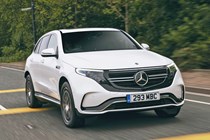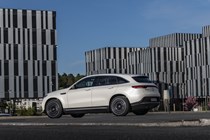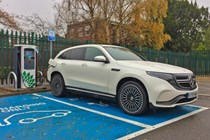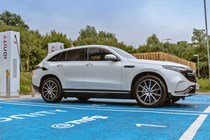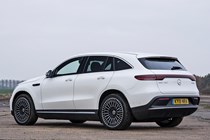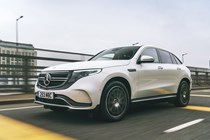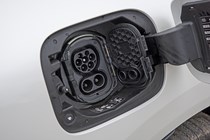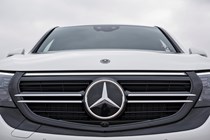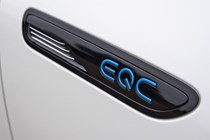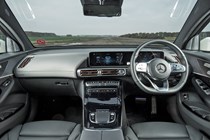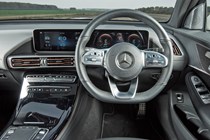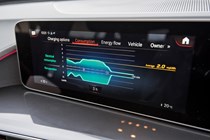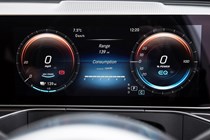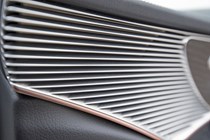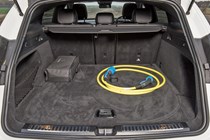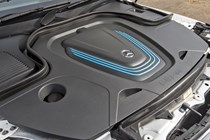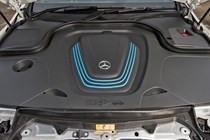
Mercedes-Benz EQC SUV (2019-2024) engines, drive and performance
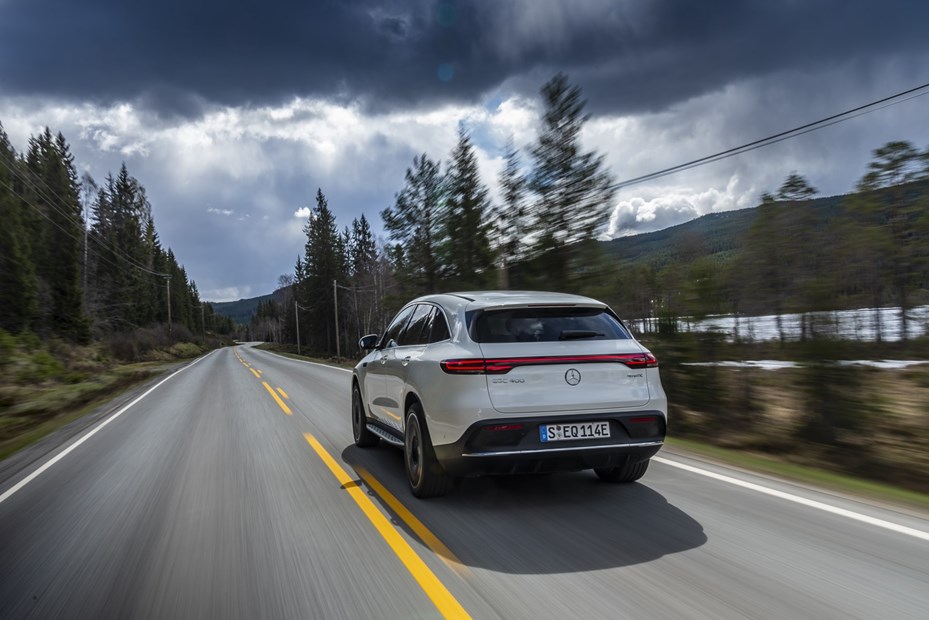
- Electric-only drive for the EQC
- Just one power output for now
- All have automatic gearbox, 4WD
From launch – and for the foreseeable future – just a single power option, with two electric motors is available, badged EQC 400.
As well as making the numbering strategy look similar to Mercedes’ other models, the 400 is a rounded-down approximation of its power output of 408hp.
Given that it has an electronically limited top speed of 112mph, the power figure is almost academic.
More important is the peak torque figure of 760Nm available the instant you press the accelerator. No need to wait for the motors to build up speed as you do with petrol and diesel cars.
That’s an impressively high figure which directly correlates with how quickly the EQC accelerates, which it does in a linear, easy to modulate manner – it’s very easy to drive this Mercedes briskly or sedately. For reference, the 0-62mph acceleration benchmark is 5.1 seconds – deeply impressive for a car weighing a smidgen under 2.5 tonnes.

All EQCs use a single speed automatic transmission and – thanks to having an electric motor at each end – four-wheel drive, which Mercedes refers to as 4Matic.
Different recuperation modes
Many electric cars allow the driver to vary the level of brake energy recuperation, and the EQC follows form here.
In essence, energy that would ordinarily be lost from the brakes as the car slows is harvested and used to put a small degree of charge back into the battery pack. For the EQC there are five settings that are switched between using the paddles behind the steering wheel:
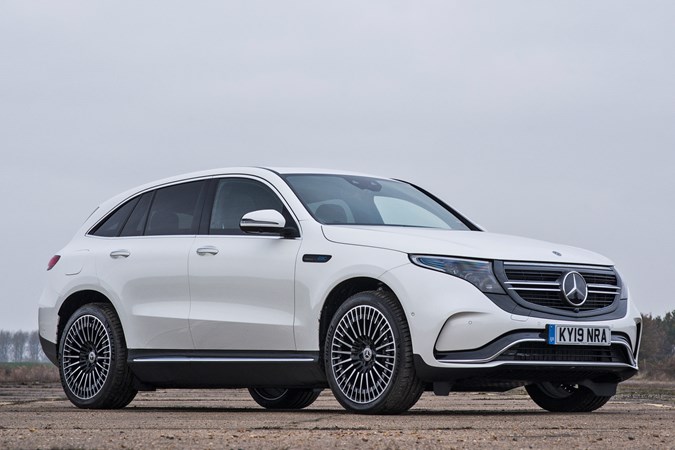
- D Auto: the car chooses the optimum recuperation levels itself
- D+: no recuperation, the car will simply coast along gradually losing momentum as you decelerate
- D: low level recuperation, with a small braking effect as you lift off the throttle
- D-: moderate level of recuperation, slowing more noticeably as you lift off the throttle
- D–: most severe level of recuperation, with a strong braking effect as you lift off the throttle
Which you use is ultimately down to personal choice and whether you like the sensation of the car braking to one degree or another as you decelerate.
What is the EQC like to drive?
- Its heaviness is noticeable
- But the controls make it light and easy to drive
- Focus is on comfort rather than thrills
Although the EQC is a relatively compact SUV, those batteries are heavy and with a total weight of whole car of 2,495kg you’re certainly aware of how much mass is being hauled around.
The good news is that such colossal heft doesn’t spoil how it drives. With so much torque it accelerates smoothly and swiftly, while the brakes are powerful bringing you to a safe stop quickly should you need it.
Similarly, the steering is also light meaning you don’t get Popeye-like forearms from driving it. Whether at slow or quicker speeds, it’s an easy car to drive smoothly.
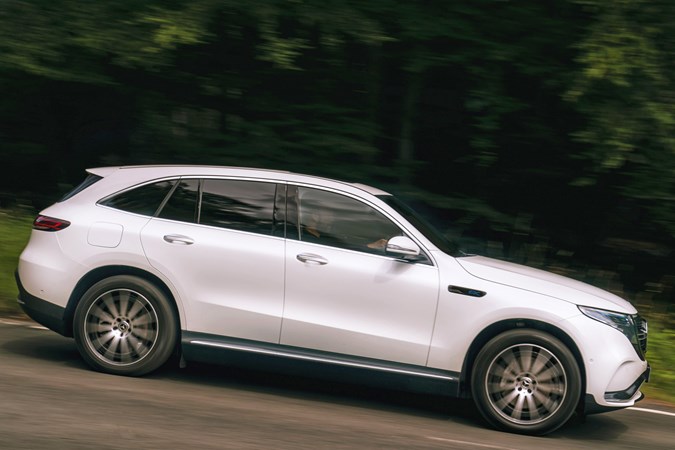
When you tackle a series of bends at speed there’s little sense of drama, with the suspension arrangement keeping bodyroll in check.
One emotion you won’t experience much of though is fun. Sure, it’s a hoot the first few times you accelerate it hard, but that isn’t how it’s been designed to be used in the main. No, despite the proliferation of Sport this and AMG that trim levels, comfort is the order of the day.
By driving the EQC smoothly, cruising quietly and so forth, you’re going to get the most out of the driving experience – as well as maximising the range of its batteries.


